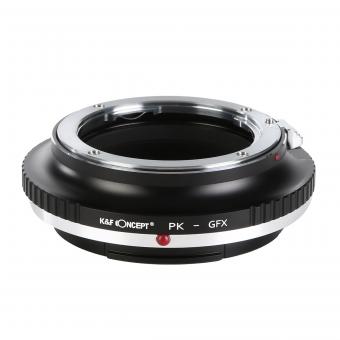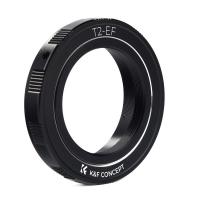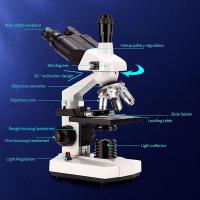Why Use Scanning Electron Microscope ?
A scanning electron microscope (SEM) is used to produce high-resolution images of the surface of a sample. It uses a beam of electrons to scan the surface of the sample, which interacts with the atoms in the sample to produce signals that can be detected and used to create an image. SEMs are particularly useful for studying the surface morphology of materials, such as the shape and size of particles, the texture of surfaces, and the distribution of features on a surface. They are also used to analyze the composition of materials, as the signals produced by the electrons can be used to identify the elements present in a sample. SEMs are used in a wide range of fields, including materials science, biology, geology, and engineering, and are an important tool for understanding the structure and properties of materials at the nanoscale.
1、 High-resolution imaging

One of the primary reasons to use a scanning electron microscope (SEM) is for high-resolution imaging. SEMs use a focused beam of electrons to scan the surface of a sample, producing highly detailed images with magnifications up to 500,000 times. This level of resolution allows researchers to study the surface morphology and topography of a wide range of materials, from biological specimens to industrial materials.
In addition to high-resolution imaging, SEMs also offer a range of other analytical capabilities, including elemental analysis, crystallography, and surface chemistry. These features make SEMs an essential tool in many fields, including materials science, nanotechnology, and biology.
Recent advances in SEM technology have further expanded the capabilities of these instruments. For example, the development of environmental SEMs allows researchers to study samples in their natural state, without the need for extensive sample preparation. Additionally, the integration of SEMs with other analytical techniques, such as energy-dispersive X-ray spectroscopy (EDS) and focused ion beam (FIB) milling, has opened up new avenues for research and analysis.
Overall, the high-resolution imaging capabilities of SEMs make them an essential tool for researchers in a wide range of fields. As technology continues to advance, SEMs are likely to play an increasingly important role in scientific research and discovery.
2、 Surface analysis

Scanning electron microscope (SEM) is a powerful tool for surface analysis. It is used to investigate the surface morphology, topography, and composition of a wide range of materials. SEM provides high-resolution images of the surface of a sample, allowing researchers to study the microstructure and properties of materials at the nanoscale level.
One of the main reasons to use SEM is its ability to provide high-resolution images of the surface of a sample. This is particularly useful for studying the surface morphology and topography of materials. SEM can also be used to analyze the composition of a sample by detecting the backscattered electrons and X-rays emitted from the sample. This allows researchers to identify the elements present in the sample and their distribution.
Another reason to use SEM is its versatility. SEM can be used to analyze a wide range of materials, including metals, ceramics, polymers, and biological samples. It can also be used to study the surface of complex structures, such as microelectronic devices and biological tissues.
In recent years, SEM has become an essential tool for materials science and engineering research. With the development of advanced SEM techniques, such as environmental SEM and in situ SEM, researchers can now study the behavior of materials under different conditions, such as high temperature, high pressure, and in a gaseous environment. This has opened up new avenues for research in areas such as materials synthesis, catalysis, and energy storage.
In conclusion, SEM is a powerful tool for surface analysis, providing high-resolution images and compositional analysis of a wide range of materials. Its versatility and ability to study materials under different conditions make it an essential tool for materials science and engineering research.
3、 Elemental analysis

Why use scanning electron microscope for elemental analysis? The scanning electron microscope (SEM) is a powerful tool for elemental analysis due to its ability to provide high-resolution images and detailed information about the chemical composition of a sample. SEMs use a focused beam of electrons to scan the surface of a sample, producing images with high magnification and resolution. This allows for the identification and mapping of elements present in the sample.
One of the main advantages of SEM for elemental analysis is its ability to provide quantitative data on the elemental composition of a sample. This is achieved through energy-dispersive X-ray spectroscopy (EDS), which detects the characteristic X-rays emitted by elements in the sample when they are bombarded with electrons. EDS can provide information on the elemental composition of a sample with high accuracy and precision.
Another advantage of SEM for elemental analysis is its ability to analyze a wide range of sample types, including solid, liquid, and even biological samples. This makes SEM a versatile tool for a variety of applications, from materials science to biology and medicine.
In recent years, there has been a growing interest in using SEM for elemental analysis in the field of environmental science. SEM-EDS has been used to analyze the elemental composition of air pollutants, soil samples, and water samples, providing valuable information for environmental monitoring and remediation efforts.
Overall, the scanning electron microscope is a powerful tool for elemental analysis due to its high resolution, quantitative capabilities, and versatility in analyzing a wide range of sample types. Its applications in environmental science make it an increasingly important tool for understanding and addressing environmental challenges.
4、 Material characterization

Scanning electron microscope (SEM) is a powerful tool for material characterization. It is widely used in various fields such as materials science, nanotechnology, biology, and geology. The main reason for using SEM is its ability to provide high-resolution images of the surface of a sample. SEM uses a focused beam of electrons to scan the surface of a sample, and the resulting images provide detailed information about the sample's morphology, topography, and composition.
One of the latest points of view on why to use SEM is its ability to provide information about the nanoscale structure of materials. With the increasing demand for materials with specific properties, it is essential to understand the structure of materials at the nanoscale. SEM can provide information about the size, shape, and distribution of nanoparticles, which is crucial for designing and optimizing materials for various applications.
Another reason for using SEM is its ability to analyze the chemical composition of a sample. SEM can be coupled with energy-dispersive X-ray spectroscopy (EDS) to provide elemental analysis of a sample. This is particularly useful for identifying the presence of impurities or contaminants in a material.
In addition to material characterization, SEM is also used for failure analysis and quality control. SEM can help identify the root cause of a failure in a material or product, which is essential for improving product quality and reliability.
In summary, SEM is a powerful tool for material characterization, providing high-resolution images of the surface of a sample, information about the nanoscale structure of materials, and elemental analysis. Its versatility makes it an essential tool for various fields, including materials science, nanotechnology, biology, and geology.







































